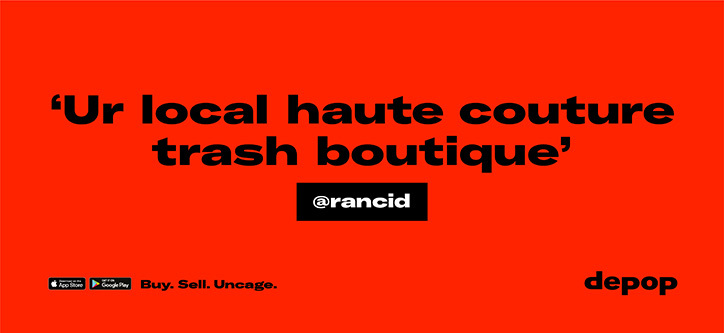Every second counts
By 2022 the global second-hand market is forecast to hit $400 billion, in contrast to the global luxury market, which is only expected to reach $305 billion.
At the forefront of this growth is second-hand fashion: pre-loved clothing, shoes and accessories sold out of thrift shops, charity stores, carboot sales and markets. More recently, online has driven growth in this sector with dedicated websites, for example eBay, and smartphone applications, such as the runaway success Depop, helping to digitise this industry.
The outlook for this sector is very positive: ThredUp, a women and kid's fashion resale website, project that by 2027 consumers' wardrobes will be made up of 11% pre-owned items – double that of 2017.
Much of this growth is being supported by on-going sustainability trends in retailing. Fashion is the second most polluting industry in the world, after the oil industry. As the environmental impact of fashion is becoming more evident, consumers are looking for alternate ways to buy clothing that they consider more sustainable. Consumer spend is shifting from fast fashion retailers, and discount retailers, towards pre-owned fashion operators and websites. Importantly, with younger consumers, this is more pronounced: 77% of 18-24-year olds state that they prefer to buy clothing from environmentally conscious brands. 40% of this age group actively shop second-hand.
Resale of rare and highly desired products is also driving growth. Websites such as Grailed and Vestiaire focus on consumer to consumer sales of highly popular brands, creating a curated marketplace environment. Grailed stocks high value designer items, such as A.P.C, Supreme and Comme des Garçons, with the price point to match. In fact, one user paid $47k for a pre-owned Raf Simons "Riot Riot Riot" Bomber jacket. Here, the market is keying into consumers' taste for unique and exclusive items of clothing, many of which were made in small runs from premium fashion houses.
Consumers can purchase second-hand items for a fraction of the cost of brand-new clothing. In times of economic uncertainty, this becomes more important. Second-hand retailing also allows fashion forward consumers to interact with new styles and products without having to lay down heavy expenditure on an item that may not fit within their carefully crafted style.
At the value end of the market, Depop is also facilitating the C2C business. With a slick app and website experience, and a focus on finding bargain deals for its users, Depop has honed into the millennial generation's developing tastes. In 2018, Depop raised $20 million in investment, and turned over an estimated $6.9 million. A key draw to consumers is the ability to sell your own old clothing (or your parent's vintage jackets), as well as buying clothing through the app. In fact, there are many users who have built small resale empires using the app exclusively; purchasing items from thrift and second-hand stores and selling them through Depop for a healthy profit.
Interestingly, traditional (brand new item) retailers are taking stock of this trend. Fashion giant ASOS operates ASOS Marketplace – a hub for vintage and pre-worn fashion - and Farfetch have a "vintage" section of their website.
Although second-hand clothing has been bought, sold and gifted for centuries, the forecasted growth in this market is making it one of the more dynamic sectors in retailing.
Sam Rintoul

